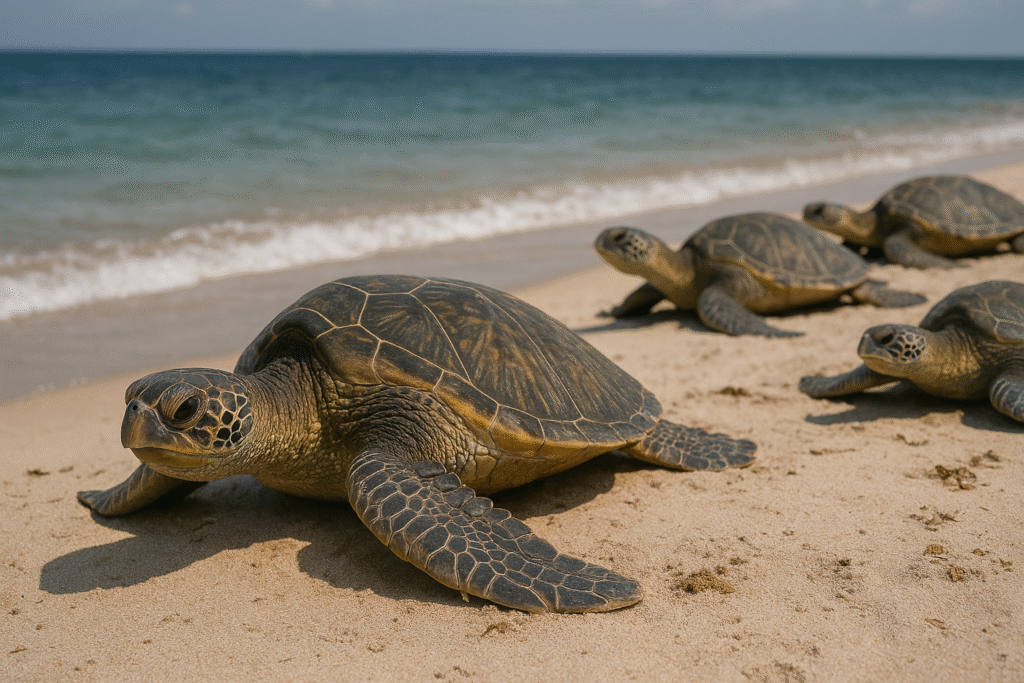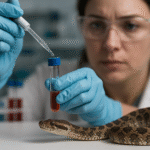By Harshit | 11 October 2025 | Sabah, Malaysia | 11:00 AM
After decades teetering on the brink of extinction, green turtles (Chelonia mydas) are showing signs of a remarkable recovery, marking a significant milestone in global marine conservation efforts. Once extensively hunted for their meat, eggs, and decorative shells, green turtles faced severe population declines and have been listed as endangered since the 1980s. Today, conservationists are celebrating as recent data indicate populations are rebounding, a result of sustained, worldwide protection initiatives.
Green turtles, one of the largest species of sea turtles, derive their name from the greenish hue of their body fat, a product of their plant-based diet. They are among seven extant sea turtle species, two of which remain critically endangered. According to Professor Brendan Godley, a conservation scientist at the University of Exeter, green turtle populations in several regions have shown tangible signs of recovery due to sustained conservation work over the past five decades. “This progress offers hope, though continuous efforts are required to sustain and expand these gains,” he said.
The revival of green turtles is credited to a combination of measures implemented across nesting sites, feeding areas, and migration routes. Protection of eggs and hatchlings on beaches has been a cornerstone of these initiatives. Conservationists patrol nesting beaches, safeguard female turtles during egg-laying, and ensure that hatchlings safely reach the ocean. Additionally, programs aimed at reducing accidental bycatch in fishing operations, including the adoption of turtle-excluder devices in nets, have further reduced mortality.
Non-governmental organizations, governmental bodies, and local communities have played a vital role in these efforts. In Sabah, Malaysia, the Marine Research Foundation has spearheaded monitoring programs and educational campaigns, raising awareness about the importance of protecting these ancient mariners. “We must use this win as a catalyst to achieve numerous other wins,” said Dr. Nicolas Pilcher of the foundation, highlighting the broader implications for global conservation strategies.
Despite the positive trends, green turtles are not yet fully restored to their historic population levels. Ongoing threats such as fishing, habitat degradation, coastal development, and climate change continue to pose significant risks. In particular, climate-induced changes to nesting beaches and ocean currents can affect hatchling survival rates. Sites such as Raine Island in Australia have reported fewer successful hatchings in recent years, underscoring the continued need for active conservation management.
The International Union for Conservation of Nature (IUCN) recently updated its Red List of Threatened Species at its World Conservation Congress in Abu Dhabi, reflecting these population shifts. Green turtles have been downgraded from Endangered to Least Concern, signaling a major success story for species recovery. However, the global Red List still includes 172,620 species, of which 48,646 are threatened with extinction, reminding the conservation community that threats to biodiversity remain widespread.
Conservation successes such as that of the green turtle also emphasize the importance of long-term, collaborative approaches. Multi-decade efforts across continents, combining field research, legal protection, public awareness, and technological innovation, demonstrate that coordinated action can reverse severe declines in wildlife populations. By contrast, other marine species, including Arctic seals, are facing worsening conditions due to habitat loss. The hooded seal has been elevated from Vulnerable to Endangered, while bearded and harp seals are now Near Threatened, highlighting the uneven nature of conservation outcomes worldwide.
Experts emphasize that while the recovery of green turtles is encouraging, it must not lead to complacency. Sustained funding, community involvement, and monitoring remain critical. Measures such as reducing marine pollution, protecting feeding grounds, and mitigating the impacts of climate change are essential to ensure that green turtles continue on a trajectory toward long-term stability.
The green turtle’s revival offers a rare cause for optimism in conservation science. It serves as a reminder that even species severely impacted by human activity can recover when deliberate, evidence-based actions are implemented over decades. This milestone not only celebrates the resilience of Chelonia mydas but also reinforces the value of continued global commitment to safeguarding the planet’s marine biodiversity.







